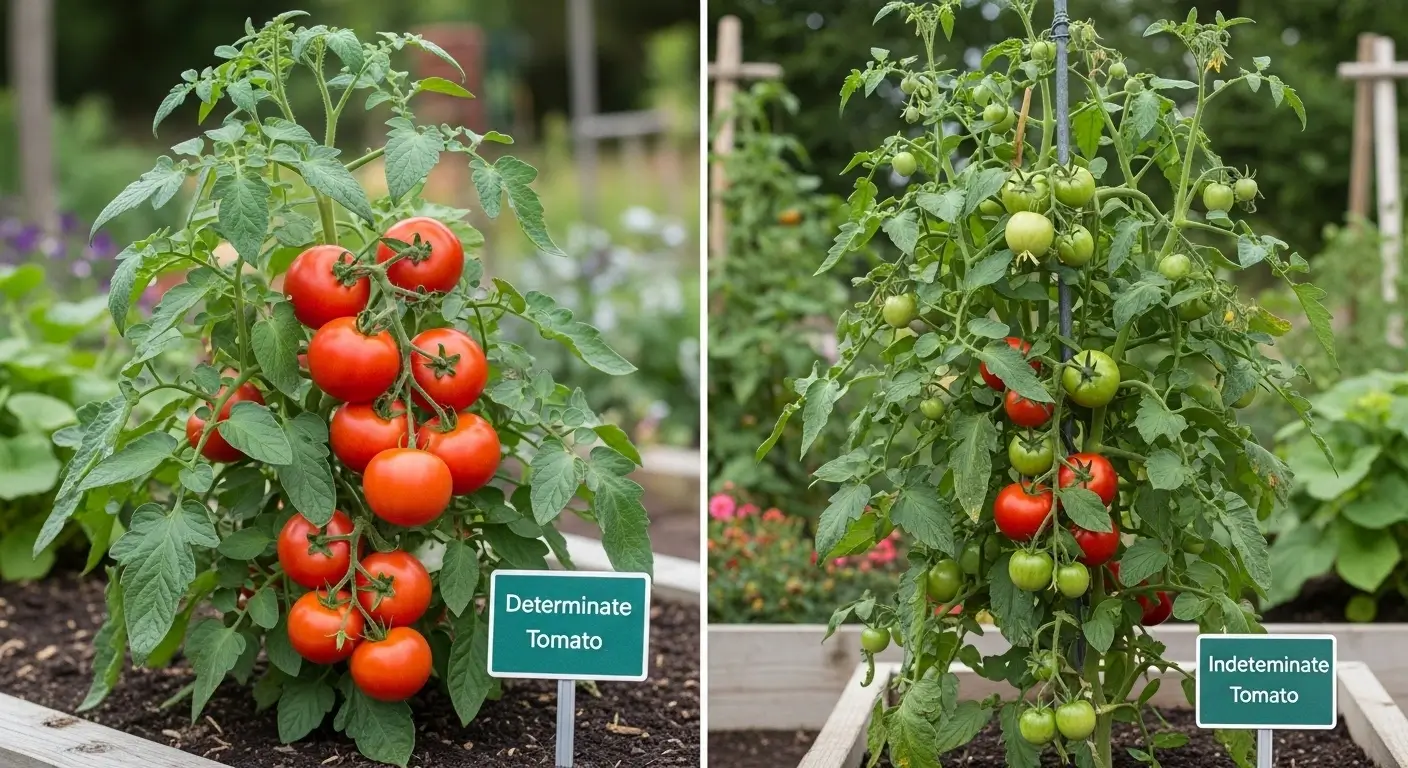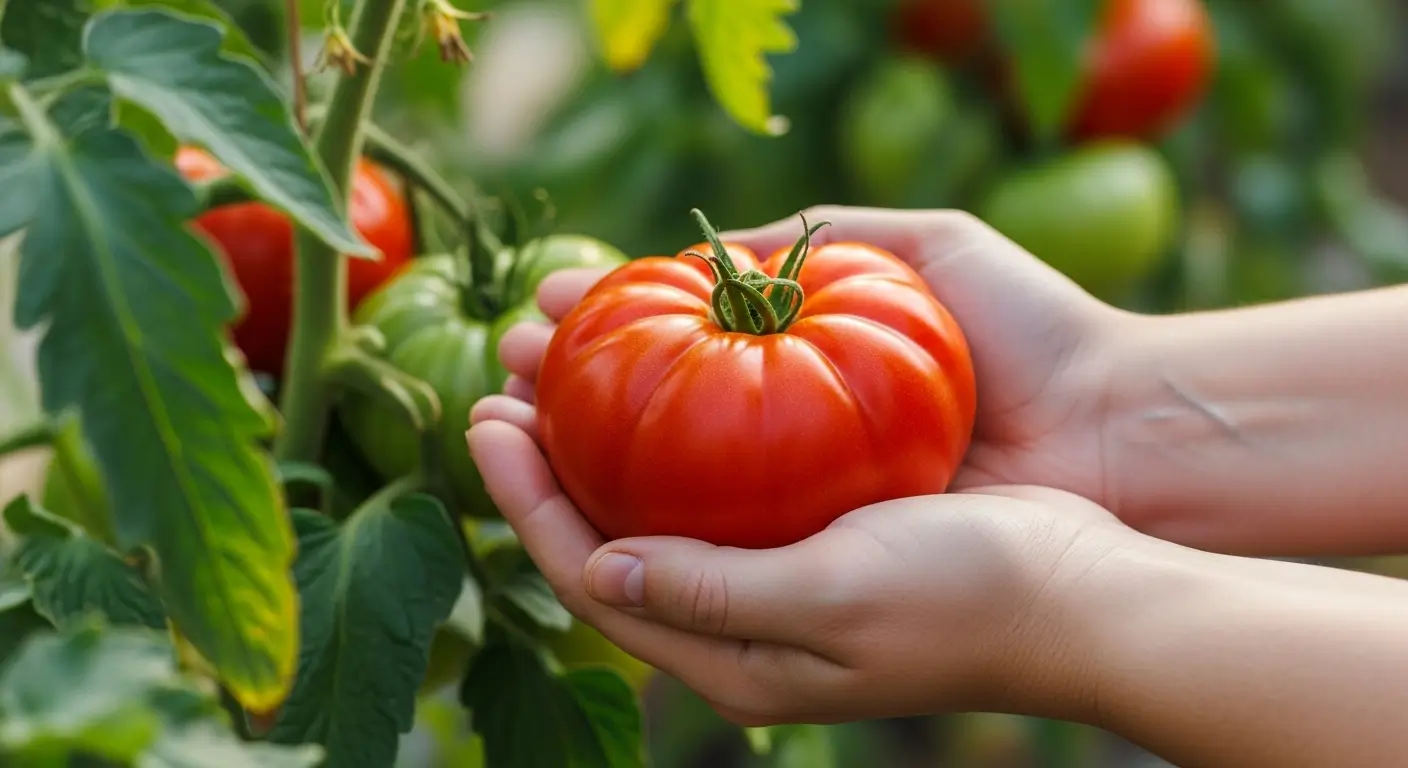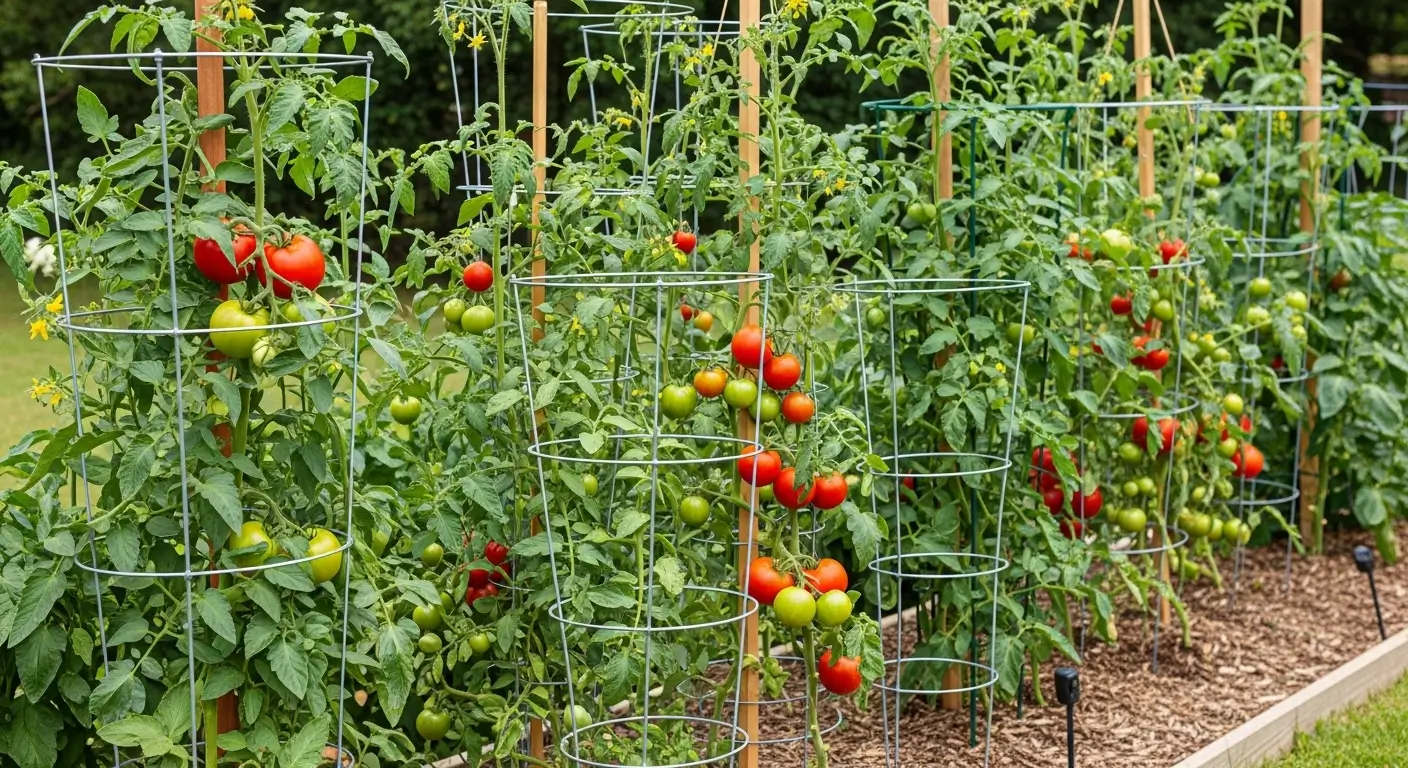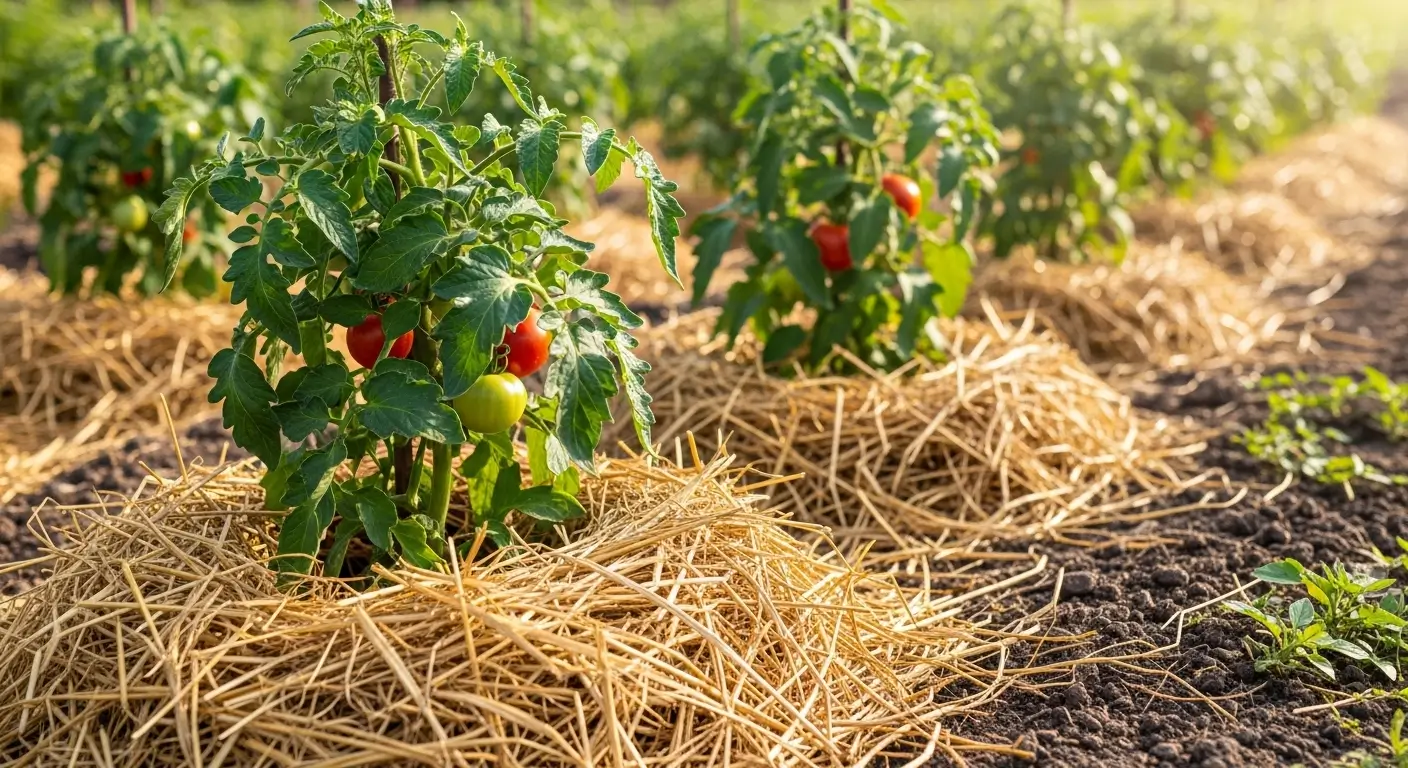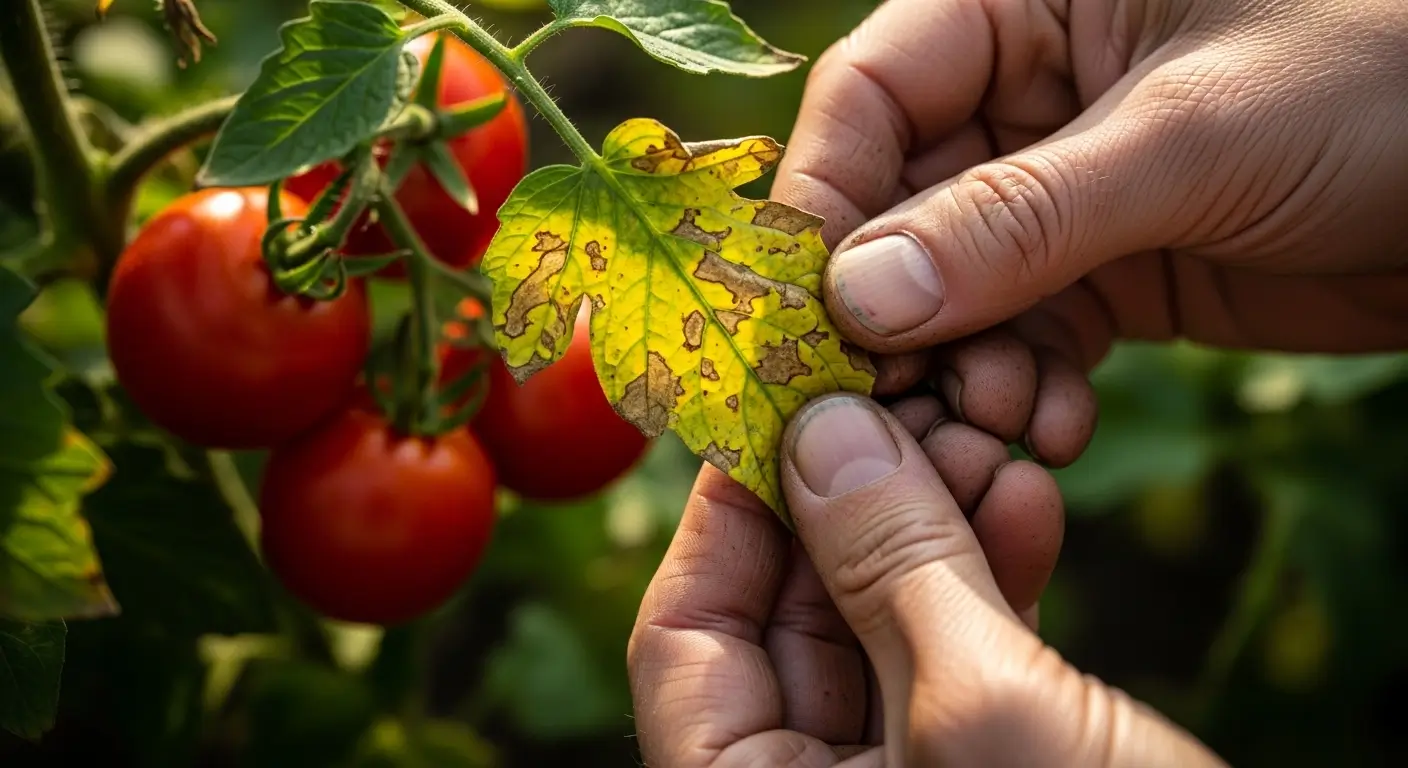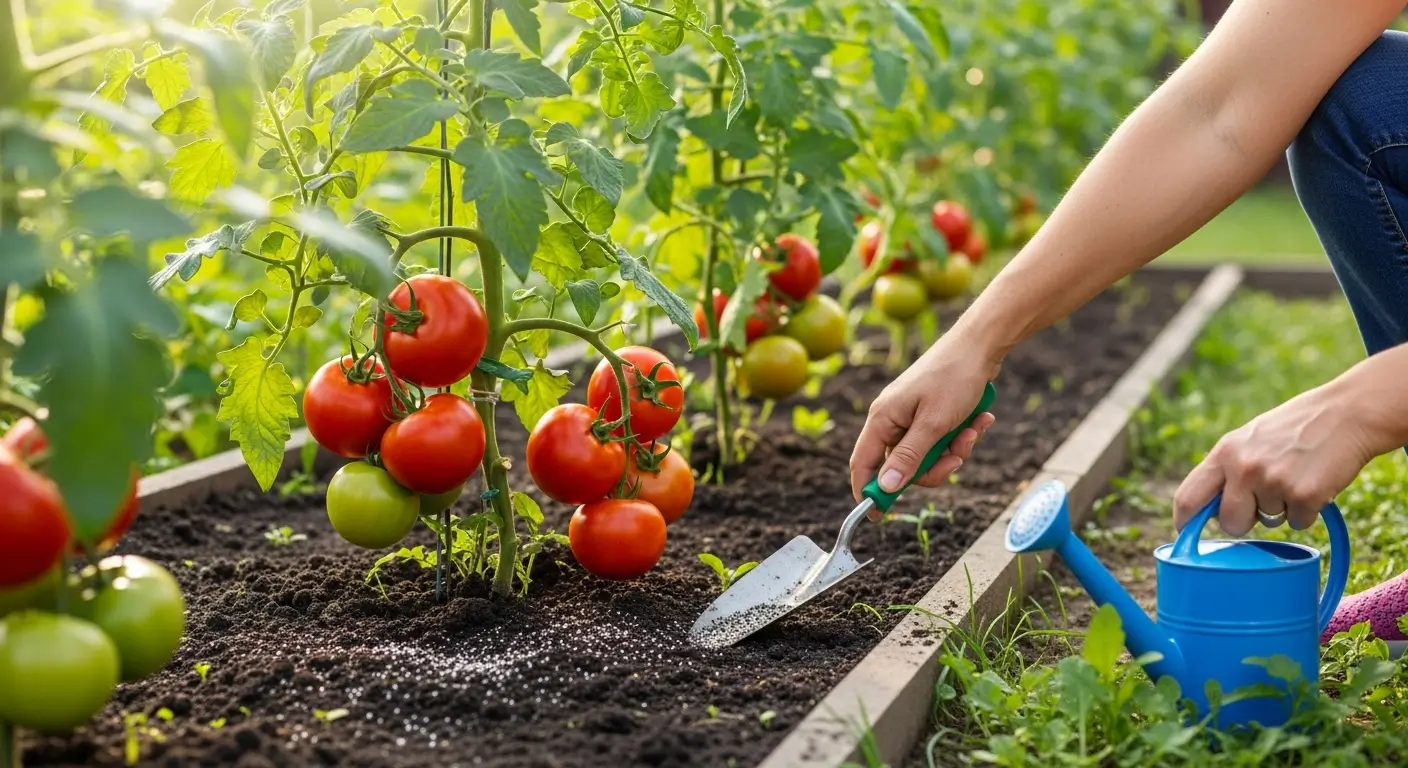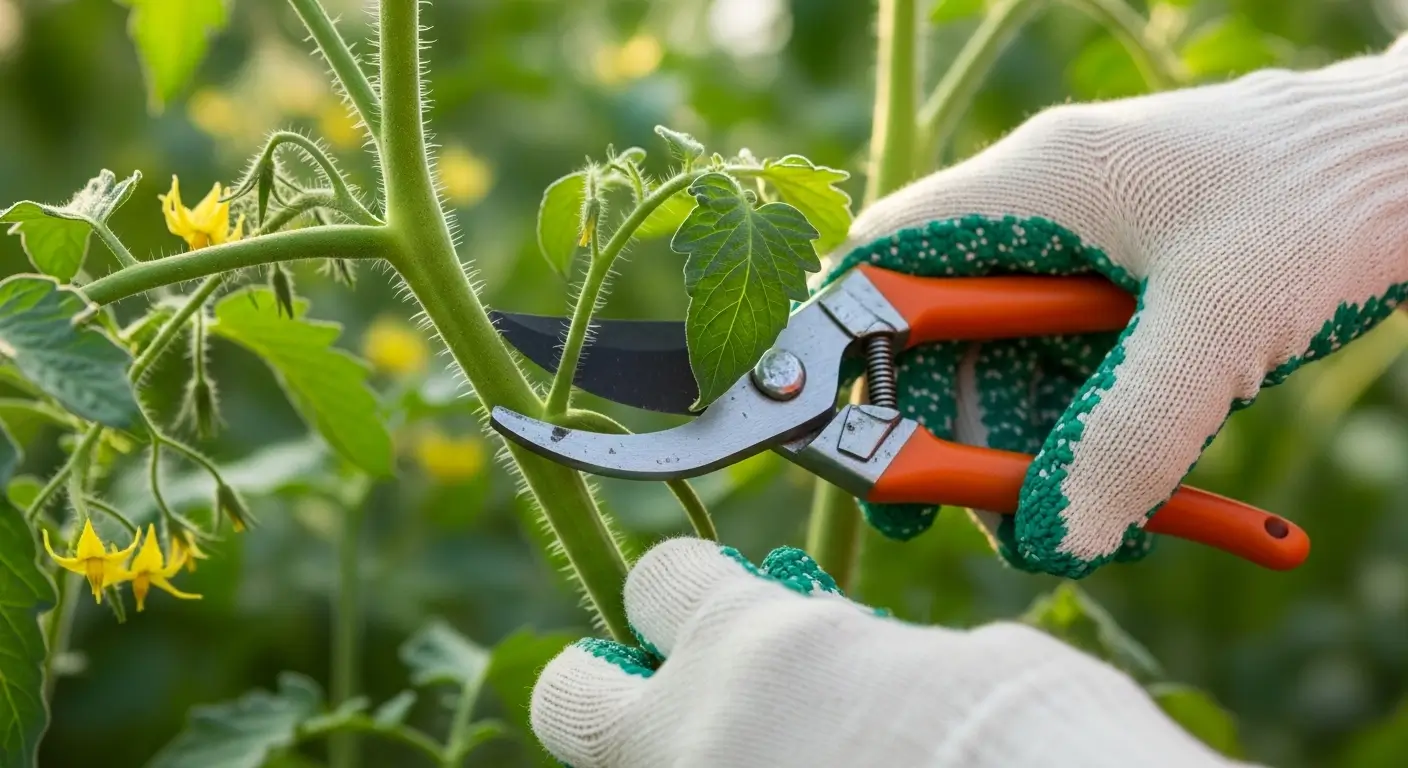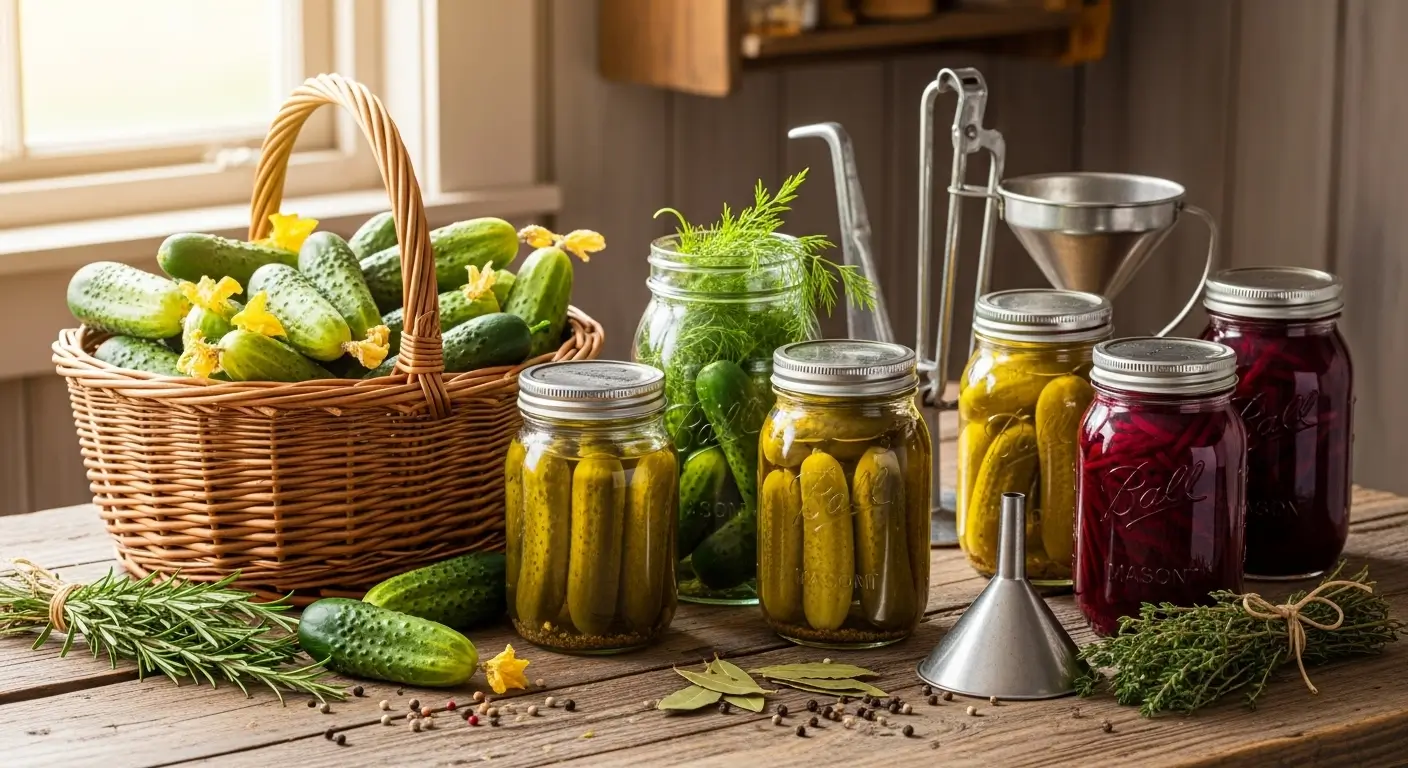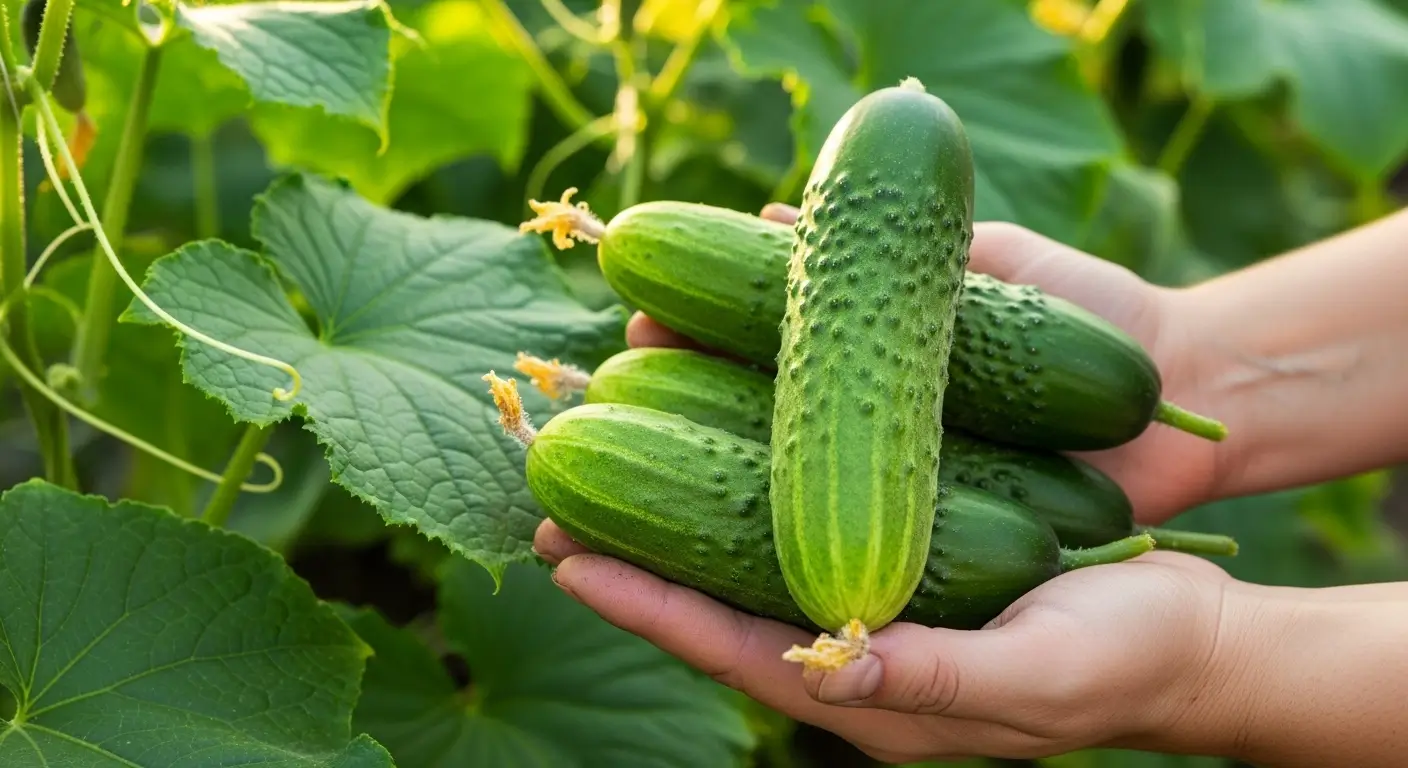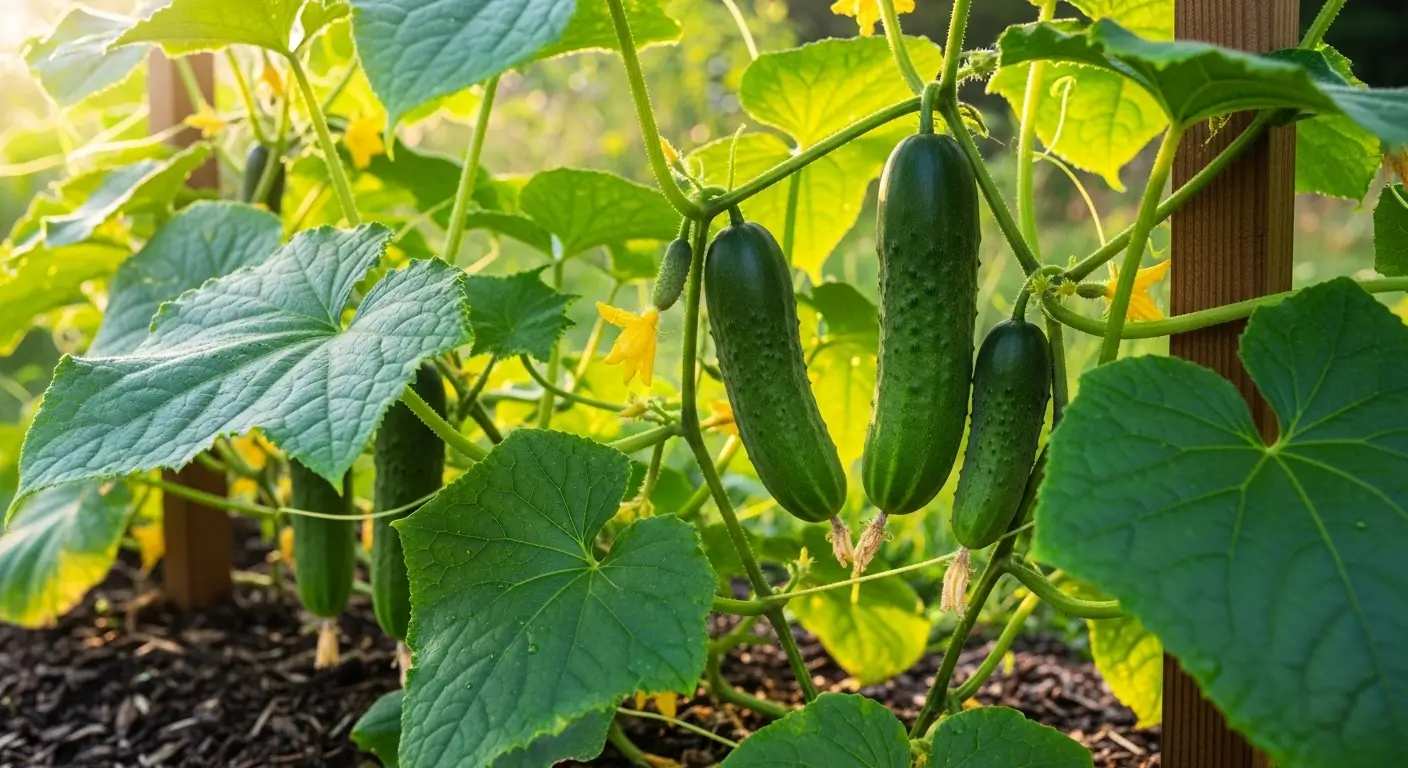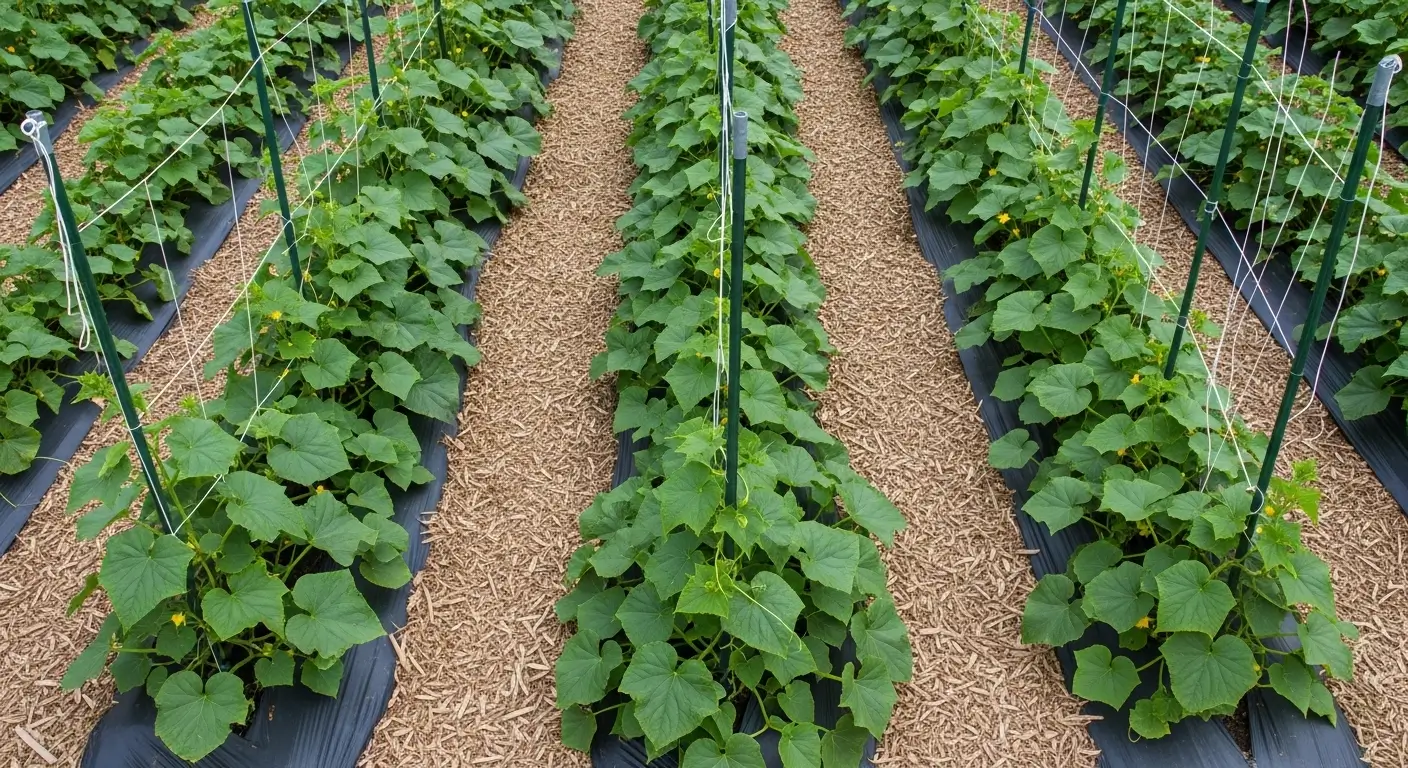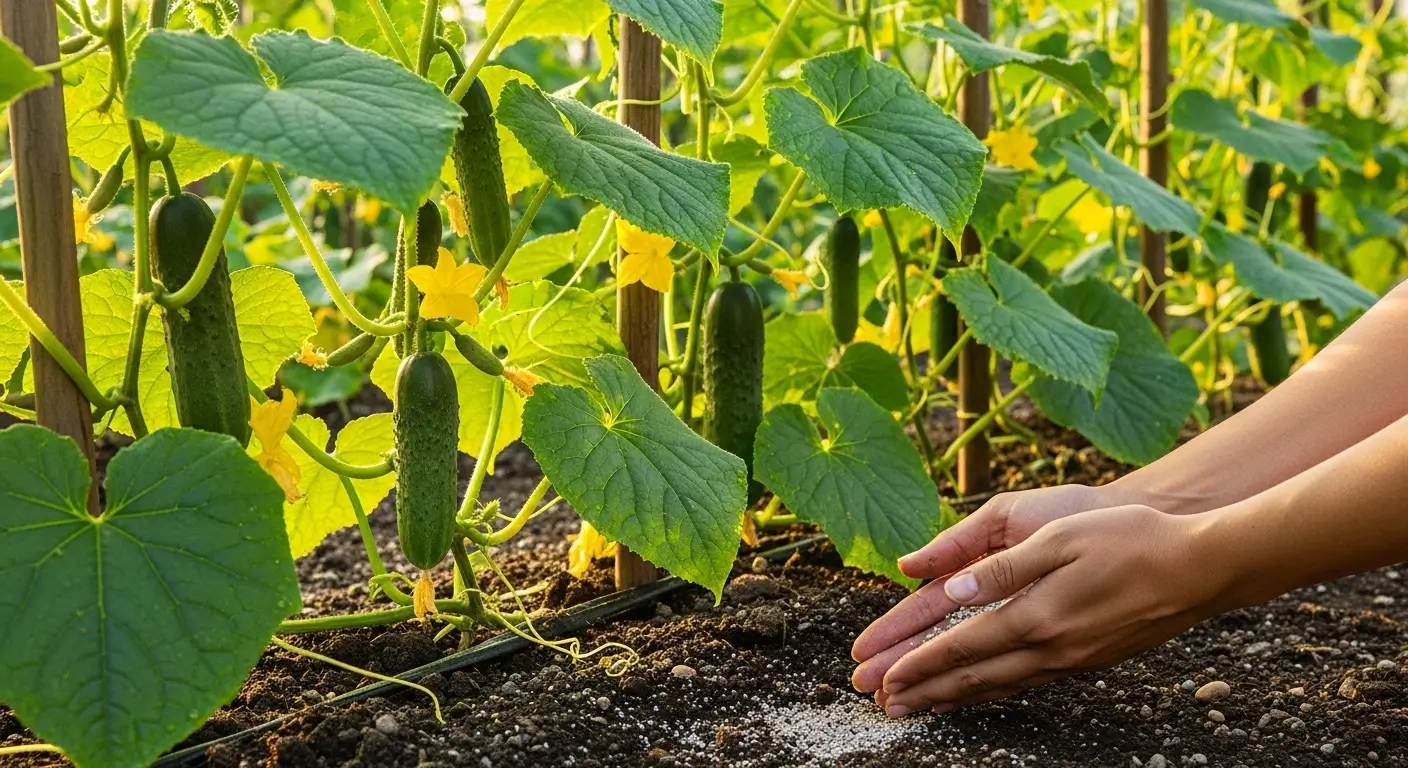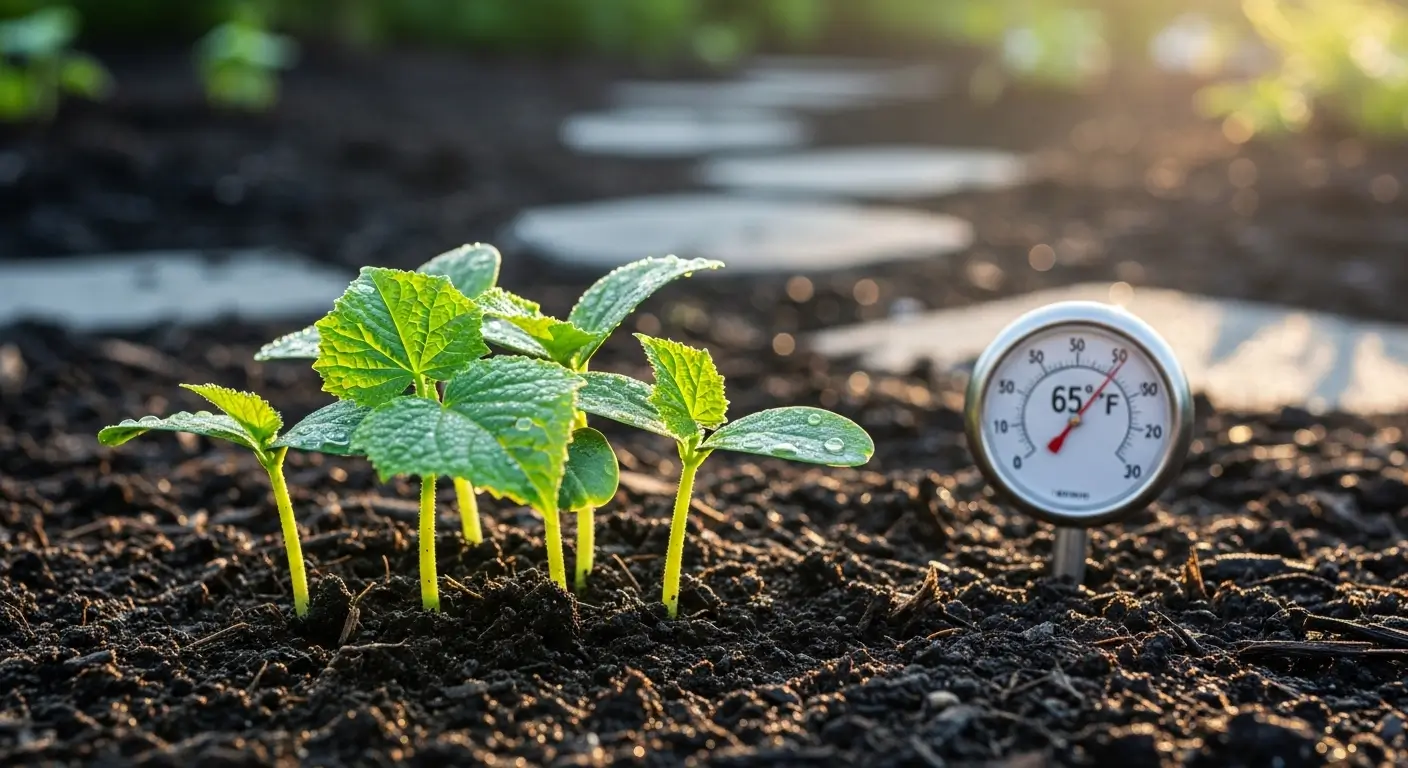Okay, let’s talk about the time I completely embarrassed myself at the local garden center. Picture this: I was super excited about my first “real” garden, marching up to the tomato section like I knew what I was doing. Then I saw all these labels saying “determinate” and “indeterminate”, and honestly? I had no clue what any of it meant.
I’m standing there looking lost when this sweet older lady (bless her heart) comes over and says, “First time with tomatoes, dear?” Twenty minutes later, she gave me a crash course in tomato types that saved me from so many rookie mistakes. And trust me, I was about to make ALL of them.
Fast forward fifteen years, and I’ve grown more tomato varieties than I can count. Now I’m that person giving impromptu tomato lessons to confused newbies at the garden center! So let me break down this whole determinate vs indeterminate tomatoes thing for you in plain English, because honestly, it’s way simpler than it sounds.
Table of Contents
What Are Determinate and Indeterminate Tomatoes?
Alright, here’s the deal. Think of tomato plants like people at a party (stay with me here).
Determinate tomatoes are like the friend who shows up, has a fantastic time, eats all the good snacks, and then leaves early. They grow to a certain height (usually around 3-4 feet), produce all their tomatoes in a big rush, and then they’re done for the season. I call them the “sprint” tomatoes because they give you everything they’ve got in one shot.
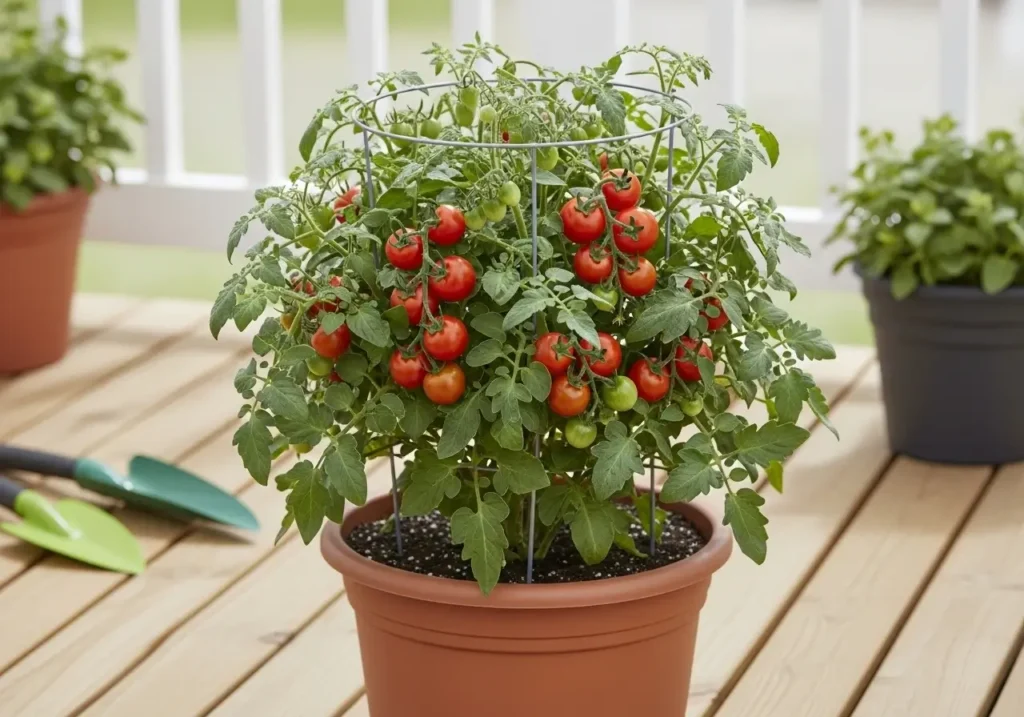
Indeterminate tomatoes are like that friend who’s still going strong at 2 AM when everyone else is ready to crash. These guys keep growing and growing, producing tomatoes until the weather finally shuts them down. In my garden here in Illinois, I’ve had indeterminate plants that were taller than me and still cranking out tomatoes when it started snowing!
The crazy thing is, this isn’t just about how tall they get. This whole growth affects when you’ll be harvesting, how much room you need, and how much work you’re signing up for.
Determinate vs Indeterminate Tomatoes: Key Differences Explained
After years of growing both types (and making plenty of mistakes along the way), here’s what I’ve figured out:
Growth Habits
Determinate varieties are like the well-behaved kids in class. My ‘Roma’ plants? They stay nice and compact, don’t get too crazy, and pretty much do what I expect them to do. Once they hit their max height, they stop growing taller and focus on making tomatoes.
Indeterminate varieties, though? They’re like that kid who can’t sit still. My ‘Cherokee Purple’ plants have zero chill – they’re constantly sending out new shoots, getting taller, spreading wider. I’ve learned to love their wild energy, but they keep me on my toes.
Fruit Production Patterns
This is where it gets exciting (and where knowing the difference can save your sanity).
Determinate tomatoes hit you with what I like to call the “tomato tsunami.” Most of their fruit ripens within about 2-3 weeks. Sounds intense, right? But if you plan to make a bunch of sauce or salsa, it’s perfect. Last summer, my ‘San Marzano’ plants basically turned me into a tomato processing machine for three straight weeks, but I had enough marinara to last all winter.
Indeterminate varieties are more like having a personal tomato subscription service. Instead of one massive harvest, you get fresh tomatoes trickling in all season. This is perfect for someone like me who loves fresh tomatoes on everything. I can grab tomatoes for dinner pretty much whenever I want from July until frost hits.
Space Requirements
Oh boy, did I learn this lesson the hard way. Determinate tomatoes are super forgiving if you don’t have tons of space. They stay manageable and don’t need crazy amounts of room. I can squeeze three determinate plants into the same area where I’d only put one indeterminate variety.
Indeterminate tomatoes need their space – seriously need it. One year, I got too ambitious with my plant spacing, and my indeterminate varieties turned my neat little vegetable garden into a tomato jungle. I couldn’t even find the peppers for half the season!
Choosing the Right Type for Your Garden
Okay, I know I could just list out all the scenarios, but honestly? Let’s make this more fun. I’ve created a little quiz that’ll tell you exactly which tomato type fits your gardening style. It’s like having a chat with me about your garden, but faster and with instant results!
🍅 Find Your Perfect Tomato Type!
Answer these quick questions to discover whether determinate vs indeterminate tomatoes are right for your garden
See? Way better than me just rambling about different situations, right? Now let’s get into the nitty-gritty details…
Best Scenarios for Determinate Tomatoes
Container growing is where these guys absolutely rock. If you’re dealing with pots, containers, or don’t have much space, determinate varieties are usually your best bet. The best tomato for containers will almost always be a determinate type because they won’t outgrow their home. I’ve had excellent luck with ‘Patio’ and ‘Tiny Tim’ varieties in big pots on my deck.
Making sauce or preserving stuff is another perfect match. When you want to do a big batch of canning or sauce-making, having all your tomatoes ready at once is actually a blessing, not a curse. I specifically grow determinate paste tomatoes just for my annual “turn the kitchen into a tomato factory” weekend.
Short growing seasons work better with determinate varieties because they get their act together faster. Suppose you’re dealing with early frosts or don’t have a super-long summer. In that case, determinate tomatoes will actually finish producing before the weather turns nasty.
Lazy gardening (and I mean that in the best way) is easier with determinate varieties. They don’t need as much staking, pruning, or general babysitting. Perfect for busy people or if you’re starting out and don’t want to get overwhelmed.
Best Scenarios for Indeterminate Tomatoes
Fresh eating all season long is where indeterminate varieties totally shine. If you’re like me and love having fresh tomatoes for everything from sandwiches to salads all summer, these are your plants. My ‘Brandywine’ and ‘Cherokee Purple’ plants keep us fresh tomatoes from July through October.
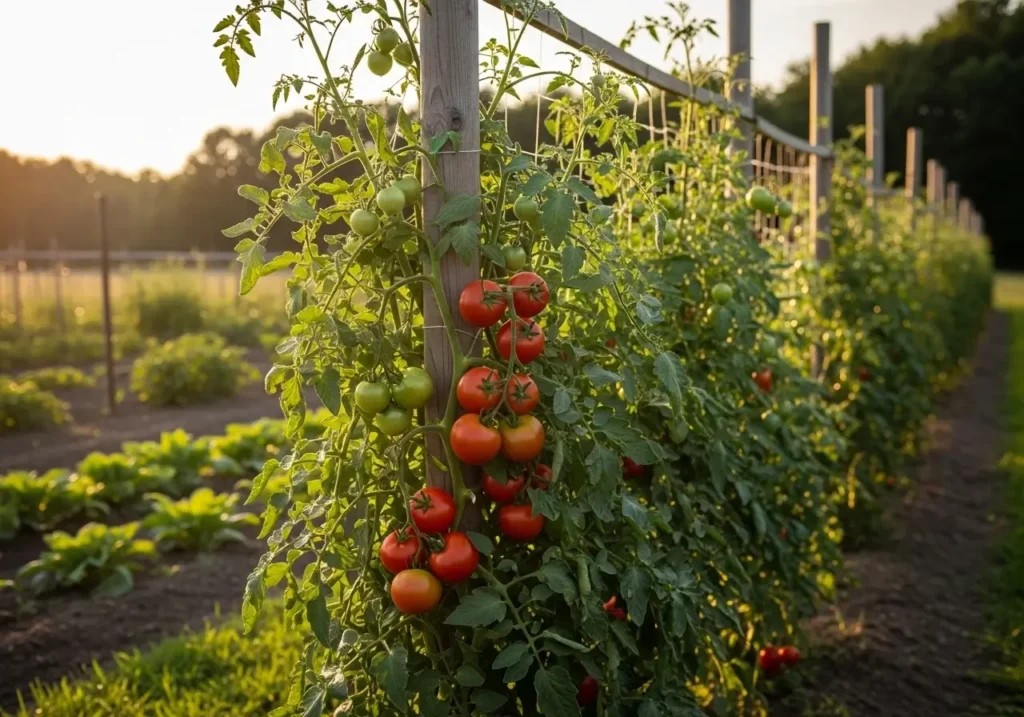
Getting the most bang for your buck is another win for indeterminate varieties. Yeah, they take up more space per plant, but they usually give you way more tomatoes over the whole season. If you can only grow a few plants, indeterminate varieties give you more tomatoes overall.
Greenhouse growing works great with indeterminate tomatoes because you can train them to grow up and really take advantage of all that vertical space. I’ve seen some impressive setups where people are growing these things 10 feet tall!
Care and Maintenance Differences
This is where knowing your tomato plant types really makes a difference:
Supporting Your Plants
Determinate tomatoes are pretty chill about support. I use good sturdy cages or stakes, and they’re usually happy. Since they stay compact naturally, you don’t need to get all fancy with the support systems.
Indeterminate tomatoes, though? They need some serious backup. I’ve tried everything from giant cages to elaborate string systems (some worked better than others, let me tell you). These days, I’m all about sturdy stakes with horizontal wires – gives them room to grow but keeps them from taking over the world.
Pruning Techniques
Here’s where things get really different and where I messed up for years. Pruning indeterminate tomatoes is super important – you’ve got to stay on top of removing those sucker that grow between the main stem and branches. I know it feels weird cutting off excellent growth, but trust me, it works.
Determinate tomatoes? Don’t go crazy with the pruning! Since they’re programmed to stop growing at a certain point anyway, cutting off too much can actually hurt your harvest. I basically remove any diseased leaves and maybe some bottom branches that are touching the ground.
Watering and Feeding
Both types need consistent water (tomatoes are such drama queens about this), but their feeding schedules differ. Determinate varieties get most of their food early in the season since they grow and produce quickly.
Indeterminate varieties need steady feeding all season long since they’re constantly growing new stuff. I go lighter but more frequently with these marathon runners.
For more detailed information about tomato care basics, the University of Illinois Extension provides comprehensive growing guidelines.
Popular Varieties of Each Type
Let me tell you about some of my absolute favorites:
Top Determinate Varieties
‘Roma’ is my ride-or-die paste tomato. Super reliable, produces like crazy, and perfect for making sauce. I grow at least six of these every year just for my preserving obsession.
‘Celebrity’ is an awesome all-around determinate that makes beautiful slicing tomatoes. It handles heat and diseases better than many varieties, which is always a win in my book.
‘Patio Princess’ is perfect if you’re growing in containers. Compact plants that produce tons of cherry tomatoes that are perfect for snacking (and trust me, you’ll be snacking on them constantly).
Top Indeterminate Varieties
‘Cherokee Purple’ is hands-down my favorite for fresh eating. The flavor is absolutely incredible – smoky, sweet, just amazing. Yeah, it can be a little finicky, but so worth it.
‘Surefire Red’ is my dependable workhorse. Produces consistently, doesn’t get sick easily, and gives me tomatoes from July until it freezes.
‘Sun Gold’ cherry tomatoes are like little balls of sunshine. These plants produce clusters of sweet orange cherry tomatoes that disappear faster than I can pick them.
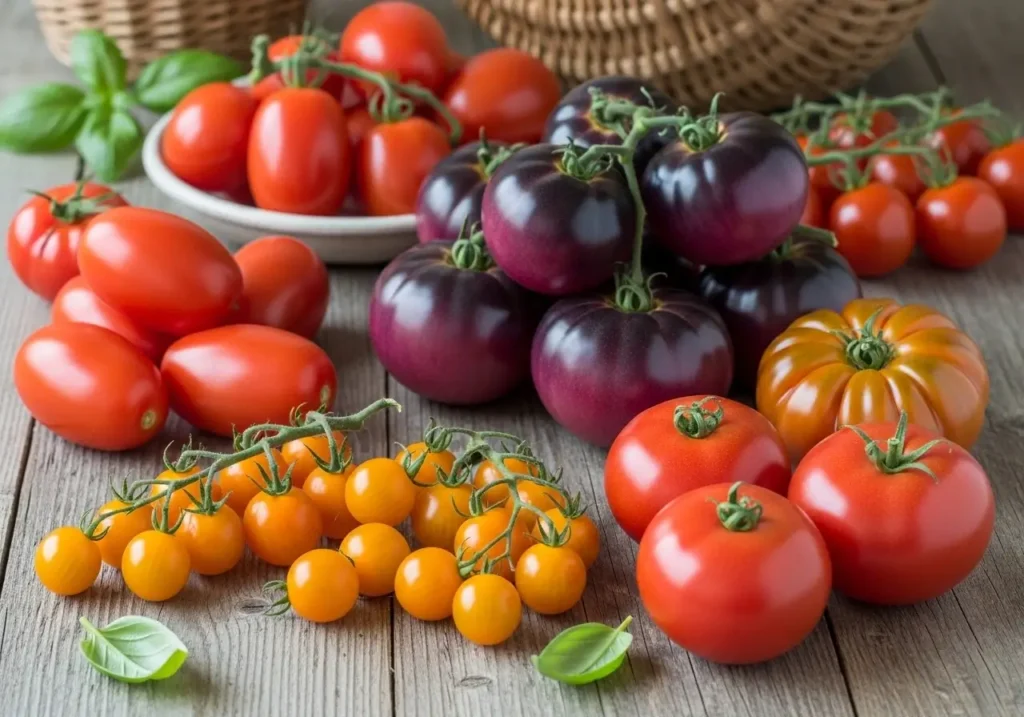
Common Mistakes to Avoid
Okay, let me save you from some of the dumb things I’ve done:
Don’t treat both types the same. I used to prune all my tomatoes exactly the same way until I figured out I was basically sabotaging my determinate plants by over-pruning them.
Don’t pick based on size alone. I once planted a bunch of indeterminate varieties just because I wanted “big impressive plants,” not thinking about the fact that they’d completely take over my tiny garden.
Don’t forget about succession planting. With determinate varieties, you can plant new ones every few weeks to keep the harvest going longer.
Don’t skimp on support. Even the compact determinate varieties can get heavy when loaded with fruit. Learned this one the hard way when a bunch of my plants fell over during a storm.
Maximizing Your Harvest
Here’s what I’ve learned about getting the most from each type:
For determinate varieties, I put all my energy into getting them off to a great start since they do everything in a short window. Good soil prep and consistent watering from day one are key.
For indeterminate varieties, it’s all about the long game. Regular feeding, staying on top of pruning, and keeping an eye out for problems become part of my weekly garden routine.
Integration with Other Garden Elements
Understanding your tomato plant types gets even more critical when you’re thinking about what to plant nearby. If you want the full scoop on which plants make good tomato neighbors, definitely check out our guide on the best tomato companion plants.
I’ve noticed that determinate varieties play nice with compact companions like basil and marigolds. In contrast, indeterminate varieties can handle bigger companions and more complex planting setups. It’s all about matching everything to how much space your tomatoes are going to take up.
If you’re working with containers or limited space, our growing tomatoes in containers guide has tons of specific tips for the best determinate varieties and container setups that actually work.
And if you want the complete tomato growing playbook – soil prep, watering schedules, seasonal care, the whole nine yards – check out our comprehensive growing tomatoes guide.
Making the Right Choice for Your Garden
After all these years, here’s my honest take: you don’t have to pick just one type! I grow both because they’re good for different things. My determinate varieties handle my sauce-making needs, and my indeterminate varieties keep us in fresh tomatoes all season.
If you’re starting, I’d probably go with one or two determinate varieties first to build your confidence, then maybe try some indeterminate types once you get the hang of things. There’s really no wrong choice here – just different learning experiences.
The main thing is to pick tomato plant types that fit your situation: how much space you’ve got, what you want to do with your tomatoes, how much time you want to spend fussing with them, and what your family actually likes to eat.
Your Tomato Growing Journey Starts Here
Getting the hang of determinate vs indeterminate tomatoes is just the beginning of your tomato adventure. Every season, I learn something new, and honestly, after fifteen years, I’m still figuring stuff out and trying new varieties.
What’s on your mind about choosing between determinate and indeterminate tomatoes? Have you tried either type and had some surprises (good or bad)? I’d love to hear about your tomato wins and fails in the comments – we’re all just figuring this gardening thing out together, and there’s always something new to learn from each other.
Bottom line: the best tomato variety is whatever works for your garden, your schedule, and your taste buds. So go get your hands dirty and start growing some tomatoes. You’ve totally got this!
Frequently Asked Questions About Determinate vs Indeterminate Tomatoes
What’s the main difference between determinate vs indeterminate tomatoes?
Think of it like this – determinate tomatoes are the “sprint runners” that grow to about 3-4 feet, produce all their tomatoes in a 2-3 week window, then they’re done for the season. Indeterminate tomatoes are the “marathon runners” that keep growing taller and producing fresh tomatoes continuously until frost kills them. It’s basically about whether you want one big harvest or steady pickings all season long.
Which type of tomato is better for beginners?
Honestly? I usually recommend determinate varieties for beginners because they’re way more forgiving. They stay compact, don’t need crazy amounts of pruning, and you get a clear sense of accomplishment when you harvest. Plus, if you mess something up, you’ll know pretty quickly and can learn for next time. Indeterminate varieties are amazing, but they require more hands-on care throughout the season.
Can I grow determinate tomatoes in containers?
Absolutely! Determinate varieties are actually perfect for container growing. I’ve had great success with varieties like ‘Patio Princess’ and ‘Tiny Tim’ in 5-gallon pots on my deck. Their compact size means they won’t outgrow their container, and you don’t need elaborate support systems. Just make sure your container is big enough and has good drainage.
Do indeterminate tomatoes really produce more fruit?
It depends on what you mean by “more.” Indeterminate varieties usually give you more total tomatoes over the entire growing season, but determinate varieties can actually produce more tomatoes per week during their peak harvest time. If you can only grow a few plants, indeterminate types will probably give you more bang for your buck overall.
How do I know if I should prune my tomato plants?
This is where knowing your tomato type really matters! If you’re growing indeterminate varieties, yes – definitely prune those suckers (the shoots that grow between the main stem and branches). I do this weekly during growing season. But if you’re growing determinate varieties, barely prune at all! Just remove diseased leaves and maybe some bottom branches touching the soil. Over-pruning determinate varieties actually reduces your harvest.
